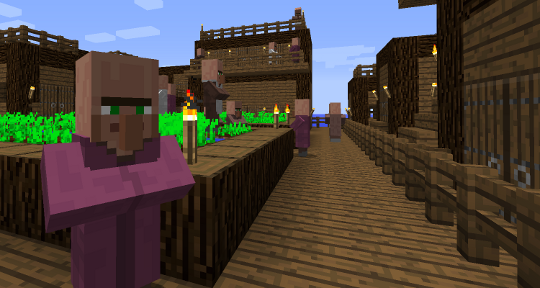E3, The Electronic Entertainment Expo, was just last week, so there’s quite a bit of videogame news circulating about the internets right now. Amid the waves of game trailers and press releases, most of us could be forgiven for not knowing that during the hubbub of the convention, a number of scholars and educators held a panel on games and learning at the USC Gamelab, with participants from the ESA’s Government Affairs team, the Higher Education Video Game Alliance, and a number of educational organizations. For me, just the fact that representatives from the videogame industry, higher education, and various government agencies (including the Swedish Minister of Upper Secondary School & Education) came together to discuss the use of games in education was very exciting. In general, the tone of the panel seemed to echo my enthusiasm. There was much talk of the vast potential of games-based learning, as well as the urgent need to realize this potential. Not surprisingly, the online discussion happening around the panel brought out both people’s aspirations and concerns for the future of educational games. I think that many of these anxieties can be summed up in a single word: Gamification.
Gamification can be a polarizing topic for both game developers and educators. On the one hand, there is the urgent desire to incorporate game-like aspects into various skill training programs and traditional school curricula. On the other hand, there is Ian Bogost’s assertion that gamification is bullshit – or perhaps more descriptively, Bogost calls gamification “exploitationware,” as its primary function is often to capitalize on this sense of urgency by painting a veneer of gaminess on a product that lacks the core of what makes games important in the first place. These two extremes notwithstanding, there is still plenty of space for nuance in the gamification debate. As Sean has previously noted here on Play the Past, even when gamification may simply function as a supplement, grafted onto a traditional teaching methods, sometimes that still helps you achieve your teaching goals. Trevor points out that when looking at the broader community of players rather than the in-game world, external motivations like achievements can often be more meaningful than play itself. This has the potential to drive the experiential narratives of the players or, as Emily cautions, simply distract from the intended content. Contrastingly, Mark has noted that many organizations have long used what we might call gamification to make workers have more fun on the job, which in many contexts can be very disturbing.
To place myself within this larger discussion, it’s important to pause for a bit of self-reflexivity. Since my day job is developing educational games, I am clearly quite invested in the idea that games have a transformative potential for education. I grew up playing games like Oregon Trail, Carmen Sandiego, and Word Munchers, each of which had a considerable, if somewhat informal, influence on my education. As simple as some of these games were, they were often more effective in teaching me basic concepts than hours of classroom instruction.

At the same time, since educational game development features fairly prominently on my resume, I’m occasionally approached by companies who want to get into the gamification business. More often than not, these companies lack clear educational goals (or goals for user engagement, skills training, etc.) for their products, as well as any kind of vision for the core mechanics that will drive users toward these goals. As such, I tend to fall much closer to the bullshit camp, cringing slightly anytime someone how great it will be once they are able to “gamify” their product.
The clamor to hop on the gamification bandwagon exists because gamification is easy – all it takes, it would seem, is a lot of enthusiasm and a quick search on LinkedIn. Plans, when they exist, are focused on short-term returns, rather than building sustainable development practices. This is where the games and learning panel differed from the usual E3 pitches about “Disrupting X with Gamification.” Rather than offering gamification as an easy solution, the panel focused on issues that are pertinent for actual game development. Significantly, the issues that they took on were not merely the technical hurdles to educational game development, but institutional, political, and cultural issues as well. Mark DeLoura, a game industry veteran and former advisor to the White House Office of Science and Technology Policy, discussed the importance of bridging the gap between educators and game developers. This kind of institutional work is often overlooked, especially in the culture of the videogame industry, which tends to disincentivize openness in favor of secrecy (O’Donnell, 2014). As such, I think that there is a lot of productive work that can be done in forming meaningful connections between developers working in the industry and educators developing curriculum.

I was also pleased to see that Minecraft: Education Edition featured prominently at the panel. Minecraft serves as an excellent tool for easing players into technical skills like modding and programming, but in many ways, it also inverts the model of gamification. Instead of adding superficial game-like features to a core body of content as a means of external motivation, Minecraft provides an engaging core game experience that readily accepts external content – whether it be architecture, literature, or geology. The end result is a project that is more engaging and flexible, while also benefiting from the broader community of Minecraft users. As with gamification, using a game like Minecraft isn’t an all-purpose tool for every situation, but it does make for a handy Swiss Army knife when compared with the gamification hammer.
One of the final open questions from the games and learning panel was where we see educational games going in the next five years. It’s easy for me to imagine the eagerness to adopt games-based learning turning into the same kind of hasty, short-term planning that characterized much of the gamification boom of five years ago. I am, however, hopeful that this will not be the case. If we can build constructive connections between game developers and educators, we can start to build a community where educational game development can flourish. Support from the videogame industry, including projects such as Minecraft: Education Edition, will hopefully make this community even stronger. By nurturing these collaborations and building sustainable development practices, we can help ensure that educational games can function as viable long-term tools.
References
Casey O’Donnell, (2014). The Developer’s Dilemma: The Secret World of Videogame Creators

1 Comment